What is Car Coolant?
Car coolant, also known as antifreeze, is a liquid essential for your vehicle’s engine. It primarily regulates the engine’s temperature, ensuring it operates efficiently. Coolant in car is a mix of water and chemicals, such as ethylene glycol or propylene glycol. This mixture helps prevent the engine from overheating during hot weather and freezing during cold weather.
Coolant flows through the engine and absorbs heat, carrying it to the radiator. In the radiator, heat is released into the air, keeping the engine cool. The chemical components of coolant in car also protect the engine’s components from corrosion, rust, and scale buildup.
Most coolants are colorful, with shades like green, orange, yellow, or pink, making them easy to identify. However, the color is not a definitive indicator of compatibility. Always check your vehicle manufacturer’s recommendations for the correct type.
In addition to maintaining temperature, coolant lubricates key components such as the water pump. Without proper lubrication, the pump may become damaged, leading to costly repairs. Regular maintenance and using the right coolant can extend your engine’s life.
Understanding what car coolant is and its purpose is crucial for keeping your engine healthy. Properly using and maintaining coolant in your car ensures optimal performance and prevents expensive damage.

The Role of Coolant in Your Vehicle’s Engine
Coolant plays a key role in keeping your car’s engine running smoothly and efficiently. It helps regulate engine temperature, ensuring it does not overheat or freeze. By absorbing excess heat, coolant protects the engine from damage caused by extreme temperatures.
Helps Maintain Optimal Engine Temperature
Engines generate a lot of heat during operation. Coolant absorbs this heat and transfers it to the radiator, where it is released into the air. This process keeps the engine within the optimal temperature range.
Prevents Engine Components from Freezing
In cold weather, coolant prevents water in the engine from freezing. Freezing can cause damage to critical components like the radiator, hoses, and the engine block itself. Coolants contain chemicals that lower the freezing point, ensuring smooth functioning in winter conditions.
Protects Against Corrosion and Rust
The chemical additives in coolant prevent corrosion and rust inside the engine. Over time, water alone can lead to rusting, but coolant protects the metal surfaces and prolongs the life of engine components.
Lubricates Moving Parts
Coolant also acts as a lubricant for moving parts like the water pump. Proper lubrication prevents wear and tear, ensuring components last longer and perform efficiently. Without coolant, the water pump may fail prematurely, leading to costly repairs.
A Key to Engine Longevity
Using the right type of coolant and maintaining the correct levels extend the engine’s lifespan. It ensures that all parts work together seamlessly, preventing overheating, freezing, and corrosion.
By understanding the role of coolant in your car’s engine, you can keep it working at its best. Always follow your vehicle manufacturer’s guidelines for coolant maintenance to avoid engine damage.
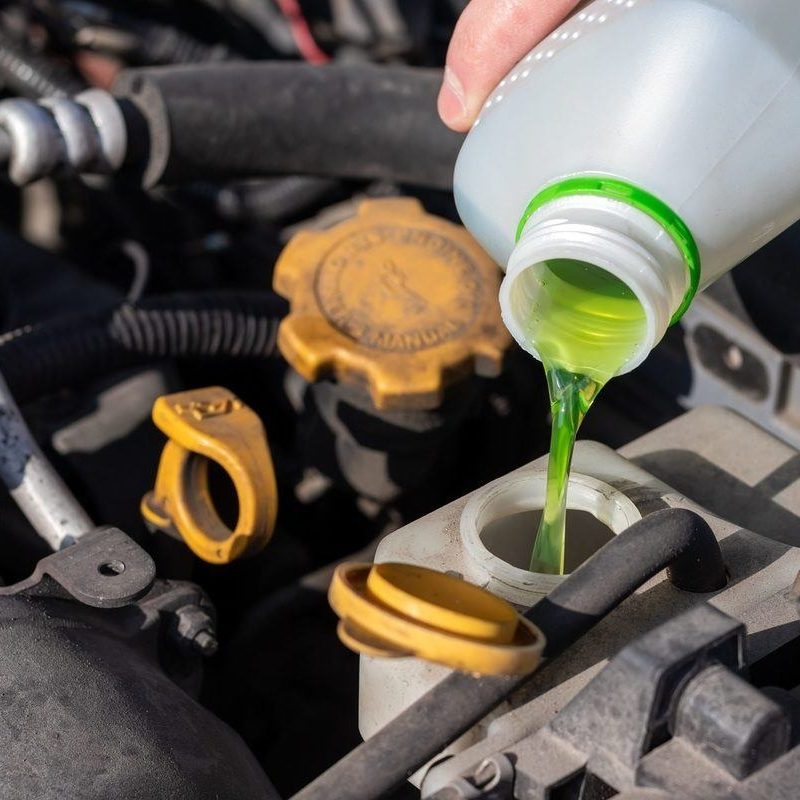
How Coolant Prevents Overheating
Coolant plays a crucial role in shielding your car’s engine from overheating. During engine operation, significant heat is generated, which can cause serious damage if not managed properly. Here’s how coolant effectively prevents overheating:
- Absorbs Excess Heat
- Coolant circulates through the engine, absorbing the excess heat generated during combustion. It reduces heat buildup and keeps the temperature at a safe level.
- Transfers Heat to the Radiator
- Once the coolant absorbs the heat, it moves to the radiator. Here, the heat dissipates into the air, lowering the coolant’s temperature before it re-enters the engine.
- Works Across Temperature Extremes
- Coolant maintains its properties over a wide range of temperatures, ensuring effective cooling even in very hot climates.
- Prevents the Engine from Boiling Over
- Special chemical additives in the coolant increase its boiling point. This reduces the risk of the engine overheating, even during intense use or in scorching weather conditions.
- Balances Engine Temperature
- Coolant ensures consistent and even temperature distribution. This prevents hotspots and keeps all engine components functioning correctly.
Using the right type of coolant for your car is essential. Regularly checking and maintaining proper coolant levels ensures optimal performance and helps you avoid the costly damage caused by engine overheating. Always refer to your car’s manual to choose the correct coolant for effective cooling and engine protection.
The Importance of Maintaining Proper Coolant Levels
Maintaining proper coolant levels is essential for the health of your car’s engine. Coolant ensures your engine runs at the right temperature. Without enough coolant, your car is at risk of overheating or freezing. These conditions can cause serious harm to the engine.
Prevents Overheating
Coolant absorbs and helps release heat from the engine. If levels drop too low, heat builds up. This can cause the engine to overheat and lead to severe damage, such as a blown head gasket or warped engine parts. Proper coolant levels prevent overheating, ensuring your engine functions efficiently.
Protects Against Freezing
During cold months, coolant prevents water in the engine from freezing. Low coolant levels make your car vulnerable to freezing. This could damage key parts like the radiator, hoses, and even the engine block. Regular checks ensure your coolant can protect against freezing temperatures.
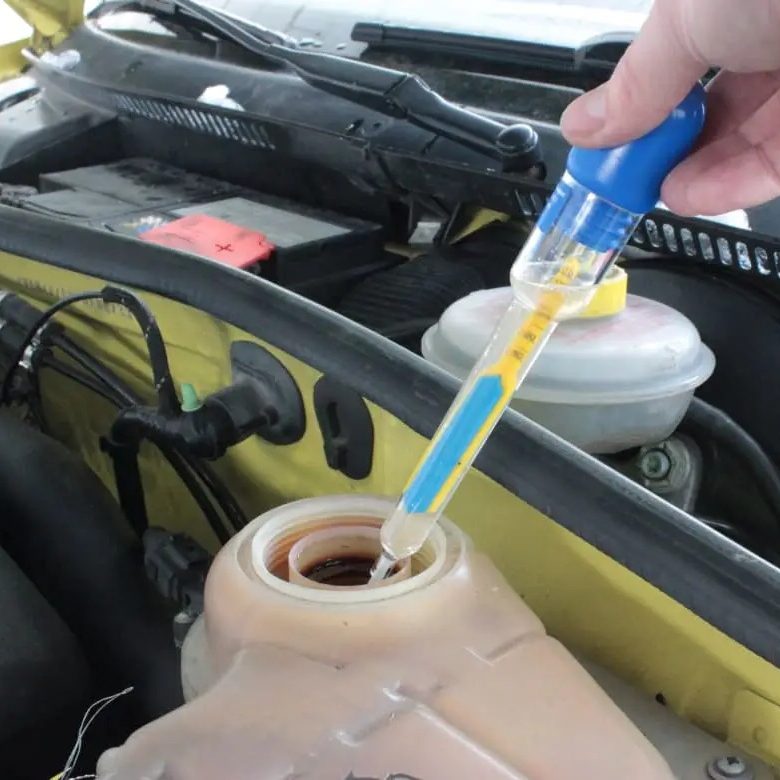
Avoids Corrosion and Engine Damage
Coolant contains additives that protect engine parts from corrosion. With insufficient coolant, these additives become depleted. This puts your engine components at risk of rust, wear, and expensive repairs. Keeping the coolant at the correct level ensures your engine stays protected.
Maintains Optimal Performance
Having the right amount of coolant is necessary for the water pump and radiator to work properly. Insufficient coolant disrupts the regular flow and may lead to poor engine performance. A well-maintained system results in smooth operation and prolonged life.
Routine Checks Save Costs
Checking your coolant levels frequently protects your car and prevents costly repairs. Look for visible signs of low coolant, such as leaks, steam, or a rising temperature gauge. Follow your car manufacturer’s recommendations for both checking and topping up coolant.
In summary, maintaining proper coolant levels is a vital part of car care. Regular checks and timely refilling reduce the risk of engine damage and keep your vehicle running efficiently. Use the correct type of coolant for your car and consult the manual for guidance.
Signs Your Car May Be Low on Coolant
Recognizing the signs of low coolant in your car is vital to prevent engine damage. Here are common indicators that your vehicle may be running low on coolant:
1. Rising Temperature Gauge
If your car’s temperature gauge shows a high reading, it signals overheating. This could mean you have insufficient coolant to keep the engine cool.
2. Engine Overheating
An overheating engine is a clear sign of low coolant. You might notice smoke or steam coming from under the hood.
3. Check Engine or Coolant Warning Light
Modern vehicles often have dashboard warning lights. A lit coolant or check engine light might indicate low coolant levels.
4. Visible Leaks Under the Car
If you notice green, yellow, or pink liquid under your parked car, it could be coolant leaking. This indicates the system needs attention.
5. Sweet-Smelling Odor
Coolant has a sweet smell. If you detect it inside or near your car, it may mean a leak.
6. Poor Heating Performance
A heater that doesn’t warm up properly during cold weather could signal low coolant levels.
7. Frequent Refilling Needed
If you find yourself repeatedly adding coolant, it could indicate an underlying issue, like a leak.
8. White Smoke From the Exhaust
When coolant leaks into the engine’s combustion chamber, it produces white smoke through the exhaust.
9. Stained or Rusty Radiator Cap
Inspect the radiator cap for stains or discoloration. It could point to an issue with coolant circulation.
By being aware of these signs, you can address low coolant levels promptly. Neglecting these warnings may lead to costly engine repairs. Always check your coolant levels as part of regular car maintenance to keep your engine running smoothly.
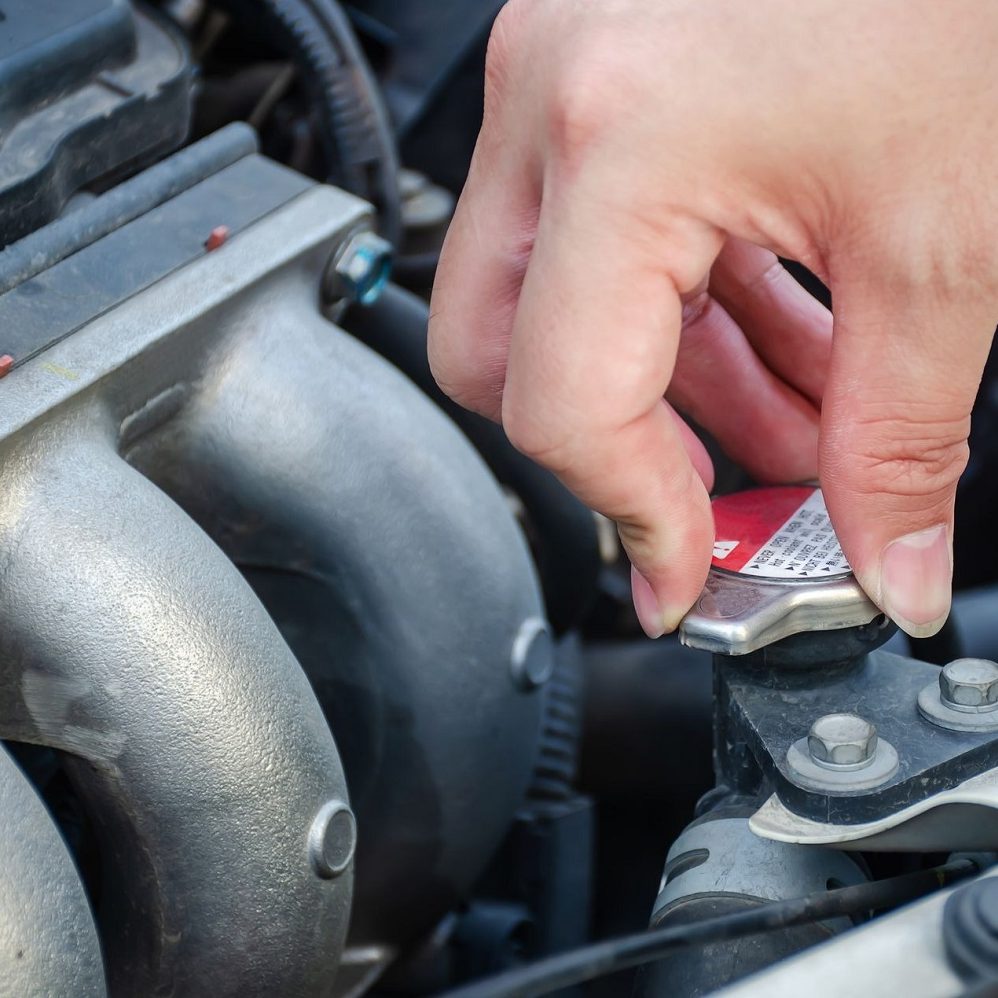
How to Check and Refill Coolant Properly
Keeping your car’s coolant at the right level is vital for engine health. Here’s a step-by-step guide to check and refill coolant properly:
Check Coolant Levels
- Park on a Flat SurfaceAlways park your car on a flat surface and turn off the engine. Ensure the engine is cool before you begin.
- Locate the Coolant ReservoirOpen the hood and identify the coolant reservoir. It is usually a translucent plastic tank with a cap labeled “coolant.”
- Check the Coolant Level IndicatorsLook for the “MIN” and “MAX” lines on the side of the reservoir. The coolant level should fall between these lines.
- Inspect the Color and AppearanceThe coolant should look clean and its original bright color (green, orange, or pink). If it appears dirty or cloudy, it may need replacing.
How to Refill Coolant
- Choose the Right CoolantRefer to your car’s manual to select the correct type of coolant. Using the wrong coolant can harm your engine.
- Remove the Coolant Reservoir CapTwist the cap off gently to avoid injury. If your engine was recently running, the coolant might still be hot and pressurized. Wait for it to cool completely.
- Add CoolantSlowly pour the coolant into the reservoir until it reaches the “MAX” line. Be careful not to overfill.
- Check for LeaksLook for leaks around the reservoir, hoses, and connections. Fix any leaks promptly to avoid further coolant loss.
- Secure the Reservoir CapTighten the cap securely to prevent leaks or contamination. Make sure it is properly sealed.
Additional Tips
- Flush the System if Necessary: If your coolant is old or dirty, consider a full flush and replacement. Follow the vehicle manual.
- Use Proper Dilution: Mix concentrated coolant with water as specified by the manufacturer.
- Inspect Regularly: Check coolant levels during regular car maintenance to avoid unexpected issues.
By following these steps, you can ensure your car’s coolant system functions efficiently. Proper care and maintenance lead to a healthier engine and smoother driving experience.
Types of Car Coolants and How to Choose the Right One
Choosing the correct type of coolant for your car is essential for engine health and efficiency. Different vehicles require specific coolants due to variations in engine design and material composition. Here is what you need to know about car coolants and how to make the right choice:
Types of Car Coolants
- Inorganic Additive Technology (IAT)
- Common in older vehicles manufactured before the 1990s.
- Typically dyed green.
- Requires frequent replacement, usually every two years or 30,000 miles.
- Contains silicates to protect metal parts from corrosion.
- Organic Acid Technology (OAT)
- Found in newer cars made after the mid-1990s.
- Often dyed orange, red, or yellow.
- Longer lasting, needing replacement every five years or 150,000 miles.
- Free from silicates, focusing on preventing corrosion over extended periods.
- Hybrid Organic Acid Technology (HOAT)
- Combines benefits of IAT and OAT coolants.
- Popular in many modern vehicles.
- Typically dyed orange, yellow, or turquoise.
- Requires replacement every five years or 150,000 miles.
- Uses both silicates and organic acids to protect car engines.
How to Choose the Right Coolant
- Check Your Owner’s Manual
- Your vehicle’s manufacturer specifies the recommended coolant type.
- Use only the approved coolant to avoid engine damage.
- Consult a Professional
- If unsure, ask a trusted mechanic for guidance.
- They can ensure compatibility with your engine.
- Consider the Climate
- For colder regions, choose a coolant with a lower freezing point.
- In warmer climates, select one with a higher boiling point.
- Match Coolant Color
- While color isn’t definitive, matching the original coolant’s color may help.
- Always confirm the chemical composition before buying.
- Avoid Mixing Different Types
- Mixing IAT, OAT, or HOAT can reduce their effectiveness.
- This may lead to engine damage or increased wear.
- Opt for Ready-to-Use or Concentrated Coolant
- Ready-to-use coolant eliminates the need for mixing.
- Concentrated options allow you to mix with water per manufacturer instructions.
Choosing the correct coolant keeps your car’s engine safe, efficient, and long-lasting. Always check your coolant levels regularly, and follow vehicle maintenance guidelines to ensure smooth performance.
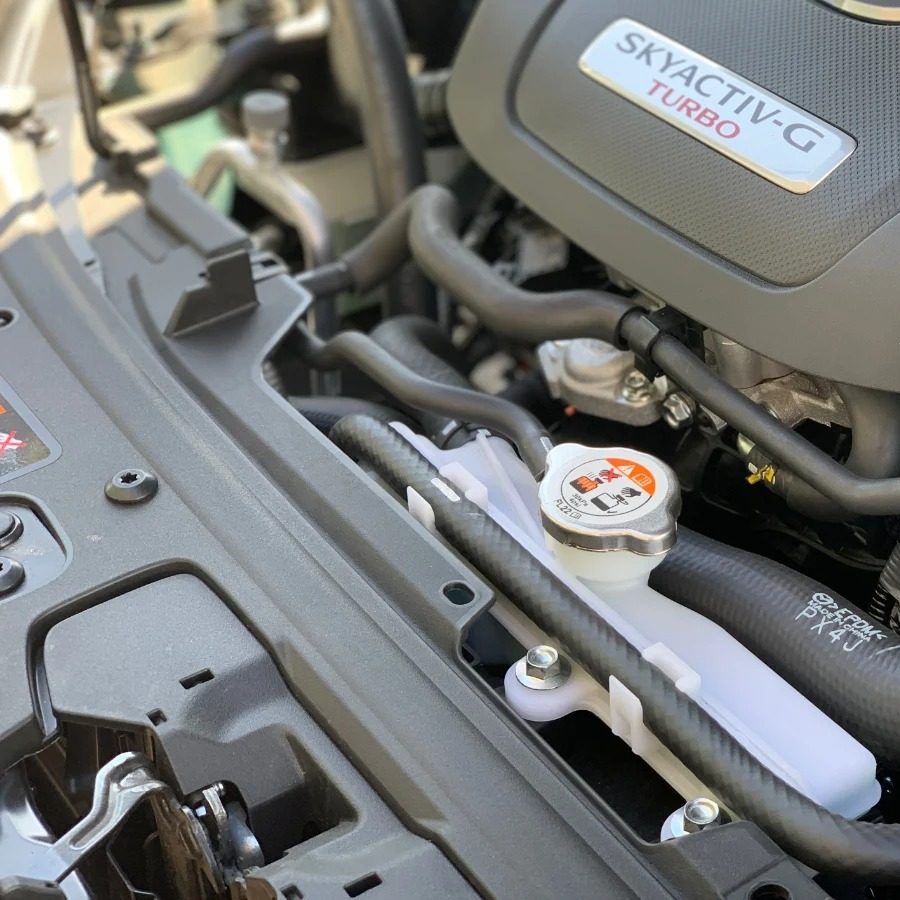
Consequences of Driving Without Enough Coolant
Driving your car with insufficient coolant can lead to serious engine problems. Coolant plays a crucial role in maintaining optimal engine temperature, preventing overheating and freezing. Without adequate coolant, your car’s engine is at risk of irreversible damage. Here are the main consequences:
Engine Overheating
Without coolant, the engine can overheat quickly. Excessive heat damages engine components, like the piston and cylinder walls. Overheating can lead to catastrophic failure, including a cracked engine block or warped cylinder heads.
Damage to the Water Pump
Coolant lubricates the water pump and helps it work efficiently. Insufficient coolant reduces lubrication, causing the pump to wear out or fail prematurely. A damaged water pump may lead to higher engine temperatures and costly repairs.
Corrosion and Rust
Coolant prevents rust and corrosion in the engine. Without it, metal parts inside your engine are exposed to moisture, leading to rust and scale buildup. Over time, this can decrease performance and shorten your engine’s lifespan.
Blown Head Gasket
Low coolant can cause overheating, which may lead to a blown head gasket. This is a serious problem that requires expensive repairs. A blown head gasket can result in oil and coolant mixing, further damaging the engine.
Cracked Engine Block in Cold Weather
During cold conditions, insufficient coolant may cause water in the engine to freeze. Freezing leads to expansion and pressure that can crack the engine block. This type of damage often requires complete engine replacement.
Reduced Fuel Efficiency
An overheating engine impacts its performance, causing it to burn more fuel than usual. This results in higher fuel consumption and increased costs.
Complete Engine Failure
Repeated overheating or freezing due to low coolant levels can result in total engine failure. Your vehicle may require a complete engine rebuild or replacement, which is extremely expensive.
Driving without enough coolant puts your car at risk of severe damage and costly repairs. Regularly check and maintain your coolant levels to ensure your engine remains safe and performs optimally. Use the correct coolant type and stop driving immediately if you suspect low levels to prevent long-term problems.
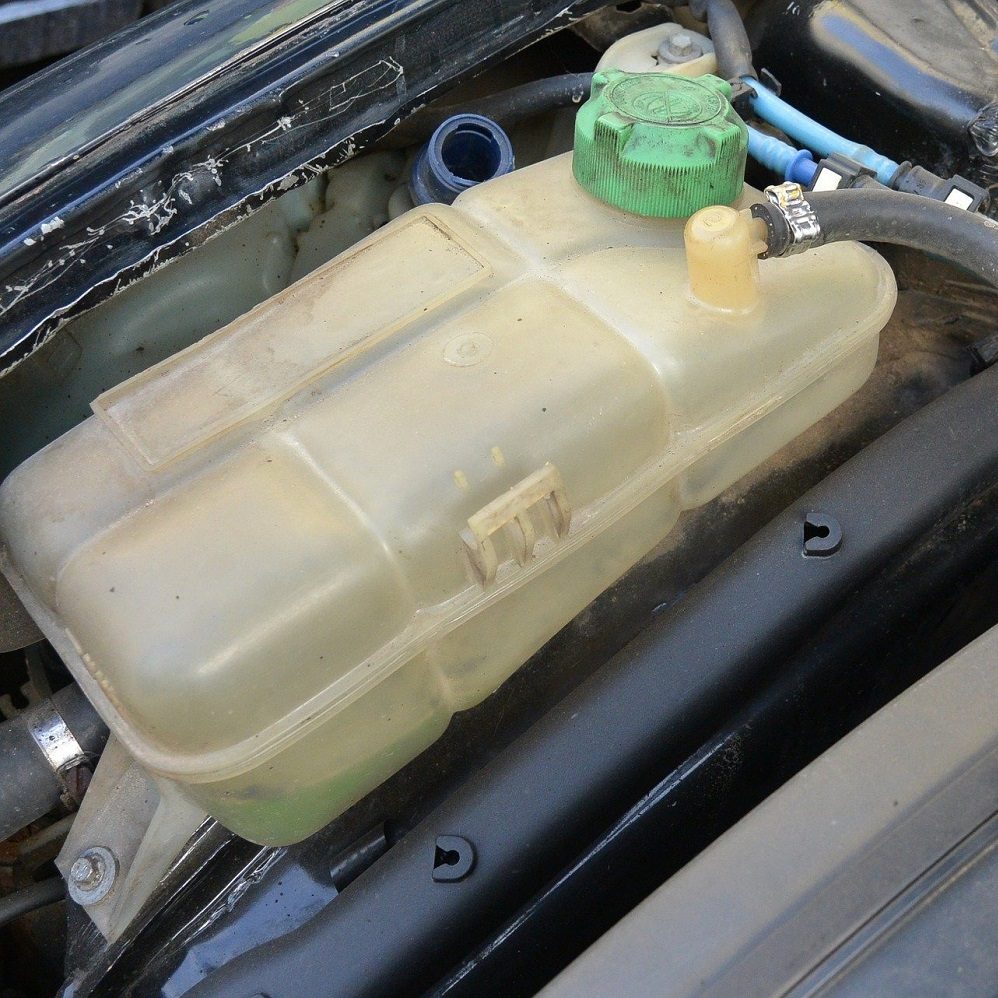
Leave a Reply